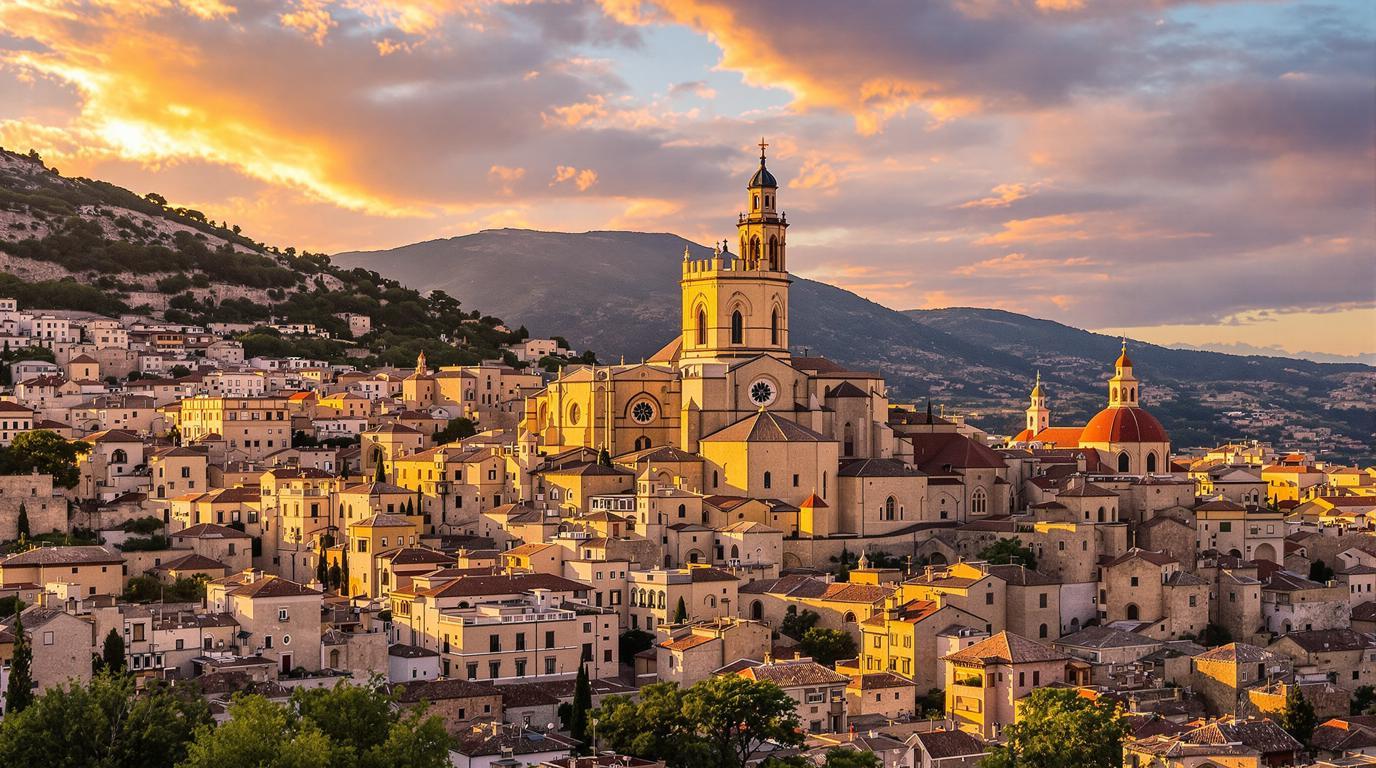Medieval charm seems to whisper from every cobblestone in Guimerà, a hidden treasure nestled in Spain’s Lleida province. This 12th-century village, with fewer than 300 residents, creates an almost magical tableau against the rolling Catalonian countryside – a place where time seems to have stopped centuries ago.
A medieval time capsule in Catalonia’s heartland
Perched dramatically on a hill, Guimerà’s stone facades glow amber in the Spanish sun. Unlike its more famous Catalonian counterparts, this medieval hamlet offers an authentic experience without the crowds. Its narrow, winding streets lead visitors through a labyrinth of history where locals still maintain traditions dating back generations.
“Our village may be small, but it holds centuries of stories within these ancient walls,” explains María Castelló, whose family has lived in Guimerà for over five generations. “The stones themselves seem to speak if you listen carefully enough.”
The crown jewel: Santa Maria Church
Dominating the village skyline, the 14th-century Iglesia de Santa Maria stands as Guimerà’s architectural masterpiece. Its impressive Gothic design features a remarkable rose window and square bell tower that have witnessed centuries of Catalonian history. The church interior reveals stunning period details that religious architecture enthusiasts will find reminiscent of hidden treasures in lesser-known European villages.
Castle ruins with panoramic rewards
Hike to the ruins of Castell de Guimerà for breathtaking panoramic views across the Valley of Corb. Though only fragments remain of this once-mighty fortress, the ascent rewards visitors with sweeping vistas of vineyards, olive groves, and the distant Pyrenees. The setting sun casting golden light across these ancient stones creates a photographer’s paradise.
Wine traditions flowing through generations
Guimerà sits within the renowned Costers del Segre wine region, where viticulture traditions date back to Roman times. Local vineyards produce distinctive reds and crisp whites that perfectly complement Catalan cuisine. The Fassina Balanya distillery offers visitors a taste of local spirits and an insight into traditional production methods, preserving techniques that remain largely unchanged for centuries.
Artisanal treasures and cultural heritage
Beyond its architectural splendors, Guimerà nurtures a vibrant artistic community. The Miro a Taula gallery showcases local artisans’ work, while Ceramica Roca Caus offers handcrafted pottery that makes for authentic souvenirs. These cultural institutions help preserve traditions that might otherwise fade into history, much like ancient crafts preserved in other historical settlements worldwide.
“Our ceramics tell stories of Catalonia’s past through patterns and techniques passed down through generations,” says Josep Roca, third-generation potter at Ceramica Roca Caus.
Practical essentials for visitors
While Guimerà’s remote charm is part of its appeal, travelers should note that public transportation is limited. Renting a car provides the most flexibility for exploring both the village and surrounding region. Accommodations range from rustic guesthouses like Cal Feliuet to wellness-focused options like Hotel Balneari, with prices typically between $48-$70 per night.
Spring and autumn offer the most pleasant weather for exploring the village’s steep, cobbled streets. Summer brings spectacular golden light but temperatures can soar, making early morning explorations advisable.
A culinary journey through Catalan flavors
Local restaurants like L’avi Siscu serve traditional Catalan cuisine featuring seasonal ingredients. Don’t miss regional specialties like trinxat (cabbage and potato dish) or botifarra amb mongetes (sausage with white beans). Many establishments offer prix-fixe “menú del día” options that provide exceptional value for experiencing authentic local flavors.
“Our cuisine reflects the landscape – rustic, honest, and full of character,” notes Chef Montserrat Vila of Restaurante Hostal del Rector. “We cook as our grandparents taught us, with respect for tradition.”
Walking through Guimerà feels like stepping into a living museum where everyday life continues within medieval walls. Unlike similar historic European villages now overrun with tourism, Guimerà retains an authenticity that transports visitors to another time – a rare gem in an increasingly homogenized world.
